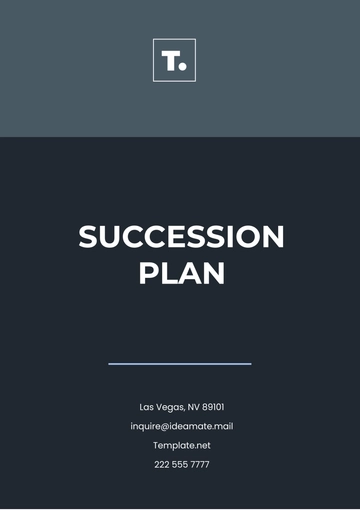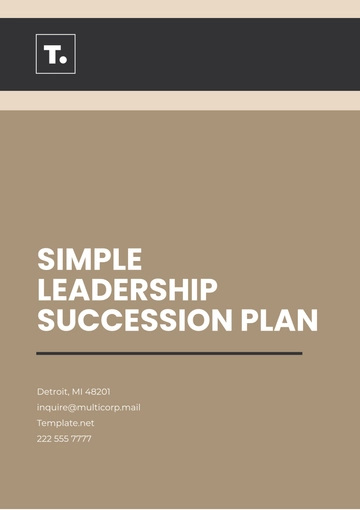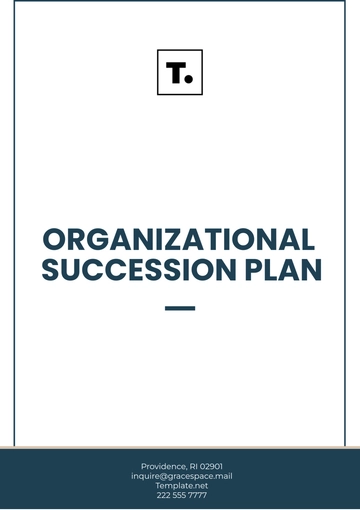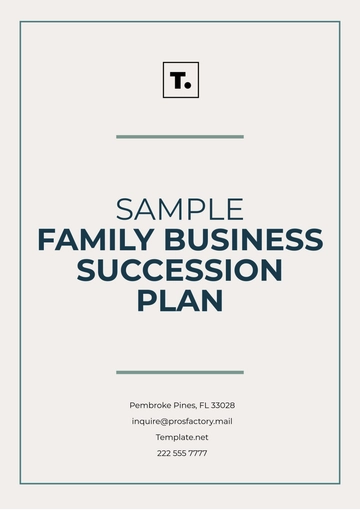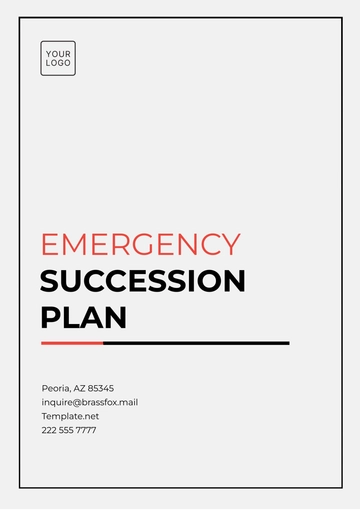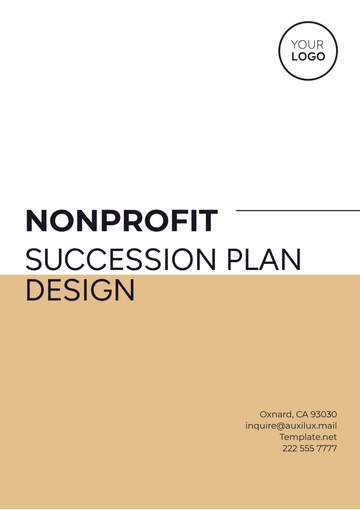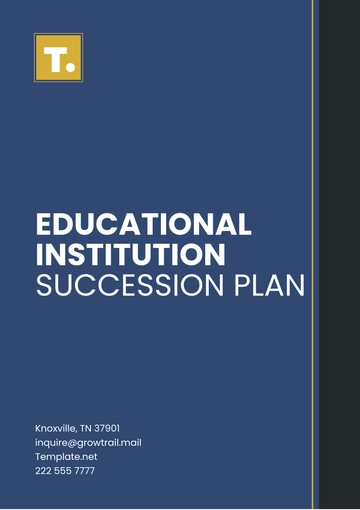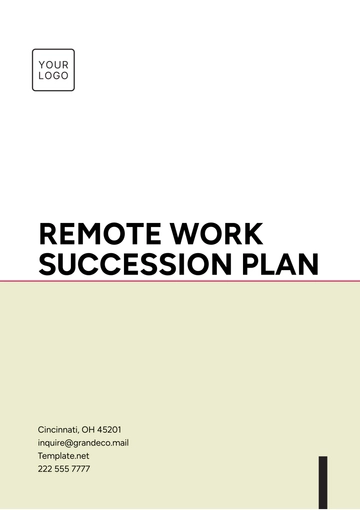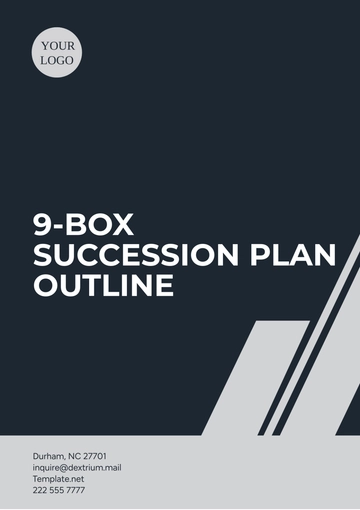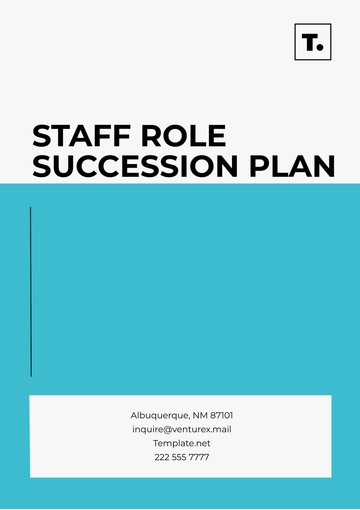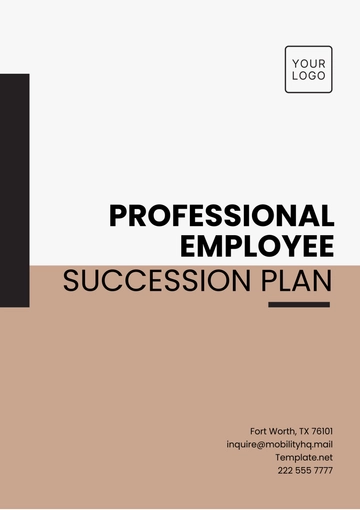Simple Leadership Succession Plan
Prepared by: [YOUR NAME]
Company Name: [YOUR COMPANY NAME]
Date: June 10, 2050
1. Introduction
The Simple Leadership Succession Plan outlines a clear, proactive approach to ensuring a smooth transition for key leadership positions within the organization. By identifying potential successors and preparing them to step into leadership roles when necessary, this plan aims to preserve continuity and stability, safeguarding the organization’s long-term success.
2. Objectives
Ensure the uninterrupted continuity of leadership in critical roles.
Identify and develop high-potential employees for future leadership opportunities.
Minimize disruption during planned or unplanned leadership transitions.
Enhance employee engagement through structured career growth and development.
3. Scope
This plan covers:
Executive leadership positions
Departmental heads and managers
Any other roles critical to the organization’s operational and strategic goals
4. Roles and Responsibilities
Board of Directors: Provides guidance and oversight on succession planning for executive roles.
Executive Team: Identifies leadership needs, approves succession candidates, and oversees the plan’s execution.
Human Resources Department: Facilitates the assessment, training, and development of identified successors.
Department Heads: Work with HR to identify potential candidates within their teams and support training and mentorship.
5. Identification of Key Positions
To prioritize efforts, this plan identifies key leadership positions deemed critical for the organization’s success. Each position listed is evaluated for its impact on strategy, operations, and culture.
6. Successor Identification and Evaluation
Step 1: Criteria Development
Define essential competencies, skills, and experience required for each key role.
Determine personal and professional qualities aligned with the organization’s mission and culture.
Step 2: Candidate Identification
Step 3: Assessment and Selection
Conduct performance reviews, interviews, and assessments for each candidate.
Gather input from managers and HR to evaluate each candidate’s readiness.
7. Development and Training Plan
For each identified candidate, create a tailored development plan to enhance their readiness for future leadership roles. Key elements of the plan may include:
Mentorship: Assign mentors from existing leadership to guide and support candidates.
Job Rotation: Provide exposure to different departments to develop cross-functional skills.
Training Programs: Offer leadership development courses or certifications.
Performance Goals: Set and review specific performance and growth targets.
8. Timeline and Implementation Milestones
The following timeline outlines key milestones for executing the succession plan:
Phase | Actions | Timeline |
|---|
Phase 1: Planning | Define criteria and identify roles | Q1 |
Phase 2: Candidate Review | Identify and assess potential successors | Q2 |
Phase 3: Development | Implement development plans | Q3-Q4 |
Phase 4: Evaluation | Review progress and readiness | Ongoing, annual review |
9. Evaluation and Review
To ensure the effectiveness of the plan, an annual review process will assess:
Successor progress toward readiness
The relevance of identified positions and successors
Adjustments needed based on organizational changes or performance shifts
Performance Metrics:
10. Conclusion
The Simple Leadership Succession Plan is an integral part of sustaining the organization’s leadership pipeline and operational continuity. By identifying future leaders and providing them with growth opportunities, this plan secures a resilient and adaptable leadership structure to support the organization’s mission well into the future. Regular updates to the plan will ensure alignment with evolving organizational needs and goals.
Plan Templates @ Template.net

